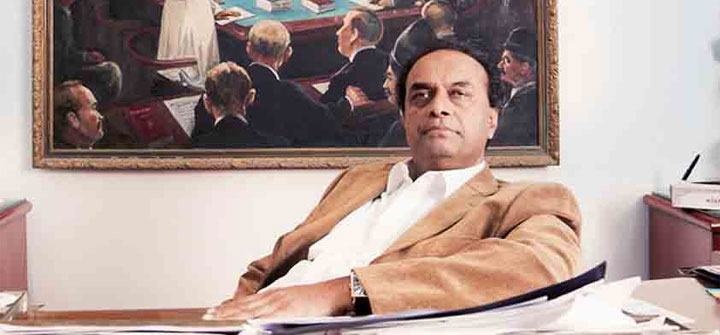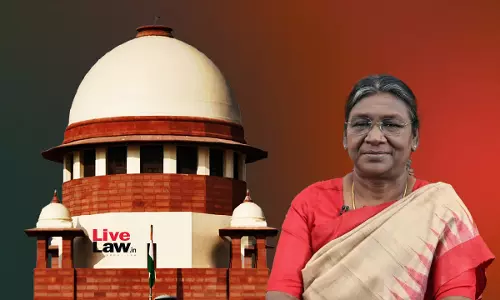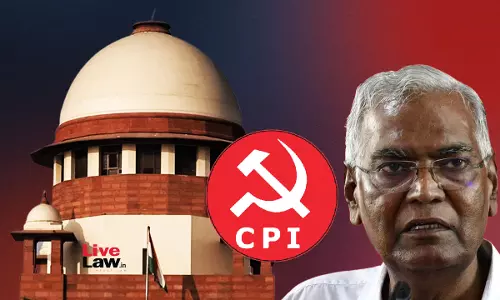Judge Loya’s Death: Mukul Rohatgi Questions The Credentials Of The Petitioners And 'Public Interest', Technicalities Do Not Matter In PILs, Says Dave

As the hearing in the string of writ petitions seeking an independent probe into the death of CBI special judge Loya resumed before the Supreme Court bench of Chief Justice Dipak Misra, Justice DY Chandrachud and Justice AM Khanwilkar on Monday, senior counsel Mukul Rohatgi, appearing on behalf of the state of Maharashtra, advanced his submissions.“Before I deal with the merits of...
As the hearing in the string of writ petitions seeking an independent probe into the death of CBI special judge Loya resumed before the Supreme Court bench of Chief Justice Dipak Misra, Justice DY Chandrachud and Justice AM Khanwilkar on Monday, senior counsel Mukul Rohatgi, appearing on behalf of the state of Maharashtra, advanced his submissions.
“Before I deal with the merits of the allegations, I wish to discuss the basic premise of a PIL,” began Rohatgi.
He referred to the 2010 judgment of the apex court in State Of Uttaranchal v Balwant Singh Chaufal, in so far as it was held therein that before entertaining a PIL, the court should prima facie satisfy itself of the credentials of the petitioner, the correctness of the content thereof and that substantial public interest is involved therein.
“The present petitions are motivated and only intended to sensationalise the death of a judge”, he said.
Continuing, he submitted, “The demise happened in the wee hours of the morning on December 1, 2014. The judge was cremated in his hometown near Latur in the presence of his family members. Neither the aggrieved persons nor the so-called PIL petitioners did anything for 3 years. Then on November 21, 2017, a baseless article appeared in the Caravan. Thereafter, these people arose from a slumber and a flurry of petitions followed.”
“A PIL ordinarily may not be entertained based on a newspaper article. Hearsay has no place in a criminal trial. It is not my desire to say that these petitions should be dismissed at the threshold but the state is satisfied with the discreet inquiry report... The advocates, on the other side, have argued the matter as if it were a murder appeal... None have read the statements of the judges,” advanced Rohatgi.
“From the night of November 29, 2014 to the afternoon of December 1, 2014, four district-level judicial officers were with the deceased. An inquiry may be directed into judge Loya’s death only if the statements of these judges are to be rejected and it is implied that they were conspirators in the death. Further, four judges of the Bombay High Court, including the Chief Justice, had reached the Meditrina Hospital around 7 am, half an hour after the death. It cannot be more contemporaneous than this,” he submitted.
Thereupon, Rohatgi proceeded to discuss the contents of the present petitions, and the affidavits and the credentials of the petitioners in the light of the observations in Chaufal’s case-
“One petition is filed by one Tehseen Poonawalla who claims to be ‘acting bonafide for the welfare of the society as a whole’. Who is the petitioner? What does he do? How is the benefit of the society related to the death of judge Loya? Further, the source of knowledge is provided as ‘media and newspaper reports’- the petition speaks of the Indian Express, Caravan, NDTV, that is it! There has been no verification of the facts before moving the Supreme Court. The nature of allegations is also completely reckless. One of the grounds avers that the post mortem was conducted without the approval of the family. Judge Loya had collapsed on the way to Meditrina Hospital and had been brought dead. That is why the hospital had directed a post mortem because they could not have issued a death certificate. No consent of the family is needed for that”.
“Another petition has been filed by one Bandhuraj Sambhaji Lone who is a journalist-activist. Again, the source of information is the newspaper and media reports. Apparently, the Caravan is the gospel on which state inquiry can be questioned and the matter argued as an appeal. Further, one of the grounds cites the discrepancies or contradictory stories in the newspapers - how does that matter? Finally, how could it have been stated that the ‘averments are true and correct to my knowledge’? The time has come for the court and the registry to deliberate on what constitutes an affidavit,” he continued.
Moving on to the petition by the Bombay Lawyers’ Association, transferred by the Supreme Court to itself from the Bombay High Court, he advanced, “It has been stated that the petitioner is a body of advocates. Nothing has been provided as to its registration and who the officebearers are. Further, the (Sohrabbuddin) trial commenced in 2017, three years after the transfer (of judge Utpat). The fact of the transfer is absolutely irrelevant. Why did the Association only move the High Court after the article in the Caravan and not at the time of the transfer when they were aware of the facts?”
Referring to the affidavit of one Ashok Asthana, he added, “Whatever is claimed in the newspaper reports has become ‘knowledge’”. In response to a question by Justice Khanwilkar as to who Ashok Asthana is, Rohatgi remarked, “No idea. We do not know who the office bearers are”. At this point, senior counsel Dushyant Dave, appearing for the association, submitted, “These technicalities do not matter in PILs.”
Rohatgi also expressed concerns regarding the credibility of the second transfer case on similar lines: “It is stated that the petitioner is engaged in social work. That is it.”
Thereafter, he relied on a series of judgments regarding maintainability of PILs:
Kusumlata v UOI [(2006) 6 SCC 180]- “...The Court has to act ruthlessly while dealing with imposters and busybodies or meddlesome interlopers impersonating as public-spirited holy men. They masquerade as crusaders of justice. They pretend to act in the name of Pro Bono Publico, though they have no interest of the public or even of their own to protect..”
Rohit Pandey v Union of India [ (2005) 13 SCC 702], wherein it was held that when a member of legal profession files public interest litigation, it is expected that it is filed with seriousness and after doing necessary home work and enquiry and, if such a writ petition is found to be misconceived, it should be dismissed with exemplary costs. “The petition in that matter had also been filed 2-3 days after the publication of an article,” remarked Rohatgi.
BP Singhal v State of Tamil Nadu [(2004) 13 SCC 673], in so far as it was observed therein that “all the averments made in the petition are based, by and large, on news reports and not on personal knowledge. The petition does not state that the petitioner has taken any care to verify himself the correctness of the averments made".
Two other two judgments rendered by the Supreme Court on the same lines were cited- Dr. B. Singh v. UOI [(2004) 3 SCC 363]; Vikas Vashishth v. Allahabad High Court [(2004) 13 SCC 485]
“The question is whether judge Loya died of a medical ailment or not. If not, then his was an unnatural death. There is no question of whether proper treatment was administered to him. There is no question as to compensation either,” Rohatgi continued, proceeding to discuss the November, 2017 letter addressed by the Commissioner of State Intelligence to the Chief Justice of the Bombay High Court. “The subject of the letter says ‘discreet verification’. Permission is sought by the Commissioner to approach the district level as well as the High Court judges. However, the Chief Justice granted permission on in respect of the former,” he added.
Moving on to the statements of the judicial officers, he remarked, “These are their own letters, not a statement to the police. These letters have been signed by the respective judges and one of them is even in the judge’s own hand. This is unimpeachable evidence.”
He quoted portions of the statement of judge Shrikant Kulkarni: “Ms. Swapna Joshi had invited Shri Modak, Shri Loya and myself... we stayed at Ravi Bhawan in a VIP suite.. .on the night of November 30, 2014, we attended Ms. Joshi’s daughter’s reception... early morning on December 1, 2014, Mr. Loya complained of chest pain... we called judge Barde who came with judge R. Rathi around 4:15 AM... we took judge Loya to the Dande Hospital where he was given emergency treatment... another local judge Waikar also arrived by his car... judge Rathi called his cousin Dr. Pankaj Harkoot... we rushed judge Loya to the Meditrina Hospital... he collapsed on the way... at Meditrina, he was put on a stretcher... he did not respond to the CPR... we were informed that he has died... we communicated this to the judges of the High Court who arrived within half an hour... two local magistrates of Nagpur accompanied judge Loya’s body for the post mortem...”
Moving on judge Modak’s statement, he recited, “There has been a gap of three years after the death of my brother... this letter is based on the memory of what I can recall... I had accompanied judges Kulkarni and Loya for a marriage... we had stayed in one room... we had probably called judges Barde and R. Rathi... judge Loya was taken to Dande... I also remember another local judge Waikar to be present at Dande... I do not remember who had informed judge Loya’s family members...”
“In the hustle bustle of the situation, it is not possible to remember which judge had called the family. How is it even relevant? It has been three years’ since the incident and their memory has also faded. Why they stayed in one room is not important; the fact is that the three judges stayed in one room,” Rohatgi elaborated.
Reading from judge Barde’s letter, he quoted, “I had received from judge Kulkarni at around 4 AM... I arrived at Ravi Bhawan with judge Rathi... we five people proceeded to the Dande Hospital... judge Waikar was also called... after judge Rathi called his cousin Dr. Pankaj Harkoot, we proceeded to the Meditrina Hospital... we had contacted judge Loya’s friends at Haji Ali... at 10 AM, the body was taken for post mortem accompanied by two other judges...”
Finally, he read excerpts from the statement of judge Rupesh R Rathi who had averred that the ECG machine at Dande Hospital was broken.
“The statements of these four judges rendered in the course of the discreet inquiry are based on their memory of what had ensued on December 1, 2014. Minor discrepancies as to the time and as to who had called whom should not be relevant,” Rohatgi submitted.
In respect of the disputed issue regarding the conduct of the ECG, he advanced, “The ECG was done at Dande. The report is a part of the police records that I will show. In his statement, judge Barde has said that the medical officer on duty had checked judge Loya via ECG. That judge Rathi has stated that the ECG machine was broken is a natural contradiction. It is only one judge’s impression. Judges are laymen so far as medicine is concerned and might have different impressions”.
Towards the end of the hearing, Dave requested to peruse the letter addressed by the Commissioner of State Intelligence to the aforesaid four judicial officers to which Rohatgi replied that he has not read the letter himself.
Hearing will continue on Friday


![Offer Extended Till 15th April! 30% Discount On LiveLaw Academys Judicial Service Examination Preparation Course [Apply Now!] Offer Extended Till 15th April! 30% Discount On LiveLaw Academys Judicial Service Examination Preparation Course [Apply Now!]](https://www.livelaw.in/h-upload/2025/04/12/500x300_595581-lla-early-bird-750-x-450.webp)

![Supreme Court Weekly Digest March 2025 [March 24 - 31, 2025] Supreme Court Weekly Digest March 2025 [March 24 - 31, 2025]](https://www.livelaw.in/h-upload/2023/02/13/500x300_458802-supreme-court-weekly-digest.webp)
